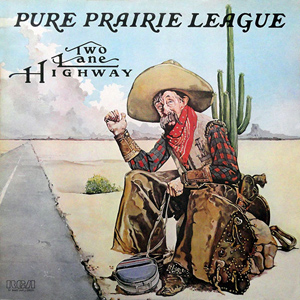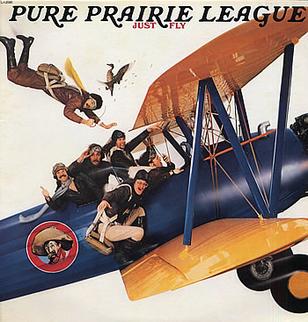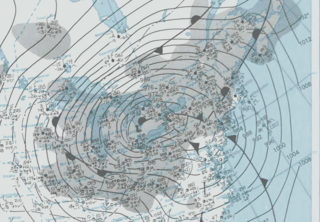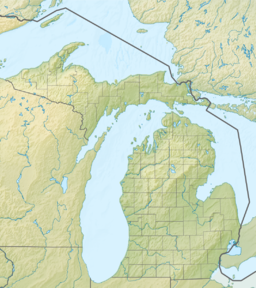
The Great Lakes, also called the Great Lakes of North America, are a series of large interconnected freshwater lakes spanning the Canada–United States border. The five lakes are Superior, Michigan, Huron, Erie, and Ontario. The Great Lakes Waterway enables modern travel and shipping by water among the lakes. The lakes connect to the Atlantic Ocean via the Saint Lawrence River.

Lake Michigan is one of the five Great Lakes of North America. It is the second-largest of the Great Lakes by volume and the third-largest by surface area, after Lake Superior and Lake Huron. To the east, its basin is conjoined with that of Lake Huron through the 3+1⁄2-mile (5.6-kilometer) wide, 295-foot deep Straits of Mackinac, giving it the same surface elevation as its easterly counterpart; geologically, the two bodies are a single lake that is, by area, the largest freshwater lake in the world.

Lake Superior is the largest freshwater lake in the world by surface area and the third-largest freshwater lake by volume, holding 10% of the world's surface fresh water. Located in central North America, it is the northernmost and westernmost of the Great Lakes of North America, straddling the Canada–United States border with the Canadian province of Ontario to the north and east and the U.S. states of Minnesota to the west and Michigan and Wisconsin to the south. It drains into Lake Huron via St. Marys River, then through the lower Great Lakes to the St. Lawrence River and ultimately the Atlantic Ocean.

Lake Huron is one of the five Great Lakes of North America. It is shared on the north and east by the Canadian province of Ontario and on the south and west by the U.S. state of Michigan. The name of the lake is derived from early French explorers who named it for the indigenous people they knew as Huron (Wyandot) inhabiting the region. Hydrologically, Lake Huron comprises the eastern portion of Lake Michigan–Huron, having the same surface elevation as Lake Michigan, to which it is connected by the 5-mile-wide (8.0 km), 20-fathom-deep Straits of Mackinac. Combined, Lake Michigan–Huron is the largest freshwater lake by area in the world. The Huronian glaciation was named from evidence collected from Lake Huron region. The northern parts of the lake include the North Channel and Georgian Bay. Saginaw Bay is located in the southwest corner of the lake. The main inlet is the St. Marys River from Lake Superior, and the main outlet is through the St. Clair River toward Lake Erie. Lake Huron has a fairly large drainage basin covering parts of Michigan and Ontario. Water flows through Lake Huron faster than the other Great Lakes with a retention time of only 22 years.

Lake St. Clair is a freshwater lake that lies between the Canadian province of Ontario and the U.S. state of Michigan. It was named in 1679 by French Catholic explorers after Saint Clare of Assisi, on whose feast day they first saw the lake.
The Pere Marquette Railway was a railroad that operated in the Great Lakes region of the United States and southern parts of Ontario in Canada. It had trackage in the states of Michigan, Ohio, Indiana, and the Canadian province of Ontario. Its primary connections included Buffalo; Toledo; and Chicago. The company was named after Jacques Marquette, a French Jesuit missionary who founded Michigan's first European settlement, Sault Ste Marie.

Lucius Lyon was a U.S. statesman from the state of Michigan. Along with Louis Campau, Lucius Lyon is remembered as one of the founding fathers of Grand Rapids, Michigan, the state's second-largest city. A Democrat, he served as a Delegate to the U.S. House from Michigan Territory (1833–1835), a U.S. Senator from Michigan (1837–1839), and a member of the U.S. House of Representatives from Michigan's second congressional district (1843–1845).

Pure Prairie League is an American country rock band which featured in its original lineup, singer and guitarist Craig Fuller, drummer Tom McGrail and steel guitarist John David Call, all from Waverly in southern Ohio. Fuller started the band in 1970 and McGrail named it after a fictional 19th century temperance union featured in the 1939 Errol Flynn cowboy film Dodge City. In 1975 the band scored its biggest hit with the single "Amie", a track that originally appeared on their 1972 album Bustin' Out. Pure Prairie League scored five consecutive Top 40 LPs in the 1970s and added a sixth in the 1980s. They disbanded in 1988 but regrouped in 1998 and continue to perform. The line-up has been fluid over the years, with no one member having served over the band's entire history. The band's most recent line-up consists of Call, drummer Scott Thompson, keyboardist/guitarist Randy Harper, guitarist Jeff Zona and bassist Jared Camic. Other notable musicians to have played with Pure Prairie League include guitarists Vince Gill, Gary Burr and Curtis Wright.

Two Lane Highway is the third album by American country rock band Pure Prairie League, released in 1975.

If the Shoe Fits is the fourth studio album by American country rock band Pure Prairie League, released in 1976.

Just Fly is the sixth studio album and seventh album overall by American country rock band Pure Prairie League, released by RCA Records in 1978.

The Great Blizzard of 1978 was a historic winter storm that struck the Ohio Valley and Great Lakes regions of the United States as well as Southern Ontario in Canada from Wednesday, January 25 through Friday, January 27, 1978. It is often cited as one of the most severe blizzards in US history. The third lowest non-tropical atmospheric pressure ever recorded in the mainland United States occurred as the storm passed over Mount Clemens, Michigan, where barometer readings fell to 956.0 mb (28.23 inHg) on January 26.

Alfred Traber Goshorn was a Cincinnati, Ohio businessman and booster who served as Director-General of the 1876 Centennial Exposition in Philadelphia. That was the first world's fair in the United States and so resounding a success that Queen Victoria knighted Goshorn and the leaders of Europe presented him with numerous accolades.

The Sir Alfred T. Goshorn House is a historic residence in the Clifton neighborhood of Cincinnati, Ohio, United States. Designed by a leading Cincinnati architect for an internationally prominent businessman, the stone house was named a historic site in the 1970s.

The Great Lakes Patrol was carried out by American naval forces, beginning in 1844, mainly to suppress criminal activity and to protect the maritime border with Canada. A small force of United States Navy, Coast Guard, and Revenue Service ships served in the Great Lakes throughout these operations. Through the decades, they were involved in several incidents with pirates and rebels.

Shan Goshorn was an Eastern Band Cherokee artist, who lived in Tulsa, Oklahoma. Her interdisciplinary artwork expresses human rights issues, especially those that affect Native American people today. Goshorn used different media to convey her message, including woven paper baskets, silversmithing, painting, and photography. She is best known for her baskets with Cherokee designs woven with archival paper reproductions of documents, maps, treaties, photographs and other materials that convey both the challenges and triumphs that Native Americans have experienced in the past and are still experiencing today.
The Sacred Mushroom was a blues rock and psychedelic rock band from Cincinnati, Ohio, active from 1966-1969. The band was led by guitarist and songwriter Larry Goshorn and his younger brother, vocalist Tim Goshorn. All members lived in a house in Cincinnati called "Mushroom House" that "sheltered a small tribe" to escape from "the rich-blundering-narrow-minded-owner-of-the-non-essential-producing-factory."
Joan L. Hester was an American politician in the state of Iowa. Hester was born in Persia, Iowa. She was married to Jack W. Hester, who served in the Iowa State Senate. A Republican, she served in the Iowa House of Representatives from 1985 to 1995.
Goshorn is a surname. Notable people with the surname include:

SS Vernon was a wooden-hulled American passenger and package freighter that sank in a Lake Michigan storm on October 29, 1887, near Two Rivers, Wisconsin, with the loss of between 36 and 50 lives, making her one of the deadliest shipwrecks ever to have occurred in Wisconsin. Only one of the people on board survived.

















